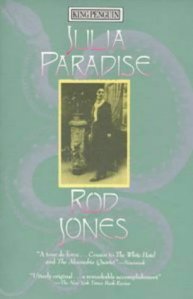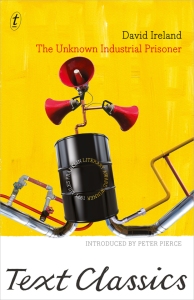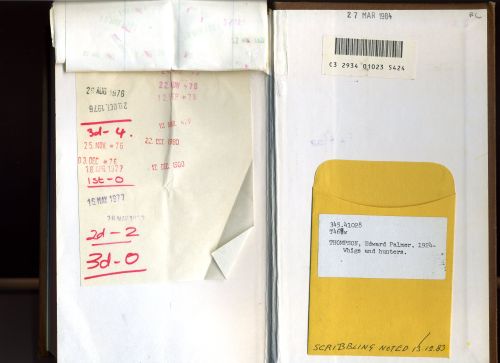Just as I tend see movies as they’re about to close, or exhibitions on their final days, so too I come to a meme that’s been rattling round the internet for months. I saw it on Lisa’s ANZLitlovers and she saw it on Travelling Penguin, who saw it on Fictionophile. The rules are:
1. Spell out your blog’s name
2. Find a book from your TBR that begins with each letter. You cannot add books from another source other than your shelves.
3. Have fun looking through your shelves finding books that meet the criteria.
Well, I’ll go with the shortened version of my blog ‘Resident Judge’ which is quite long enough thank-you. And believe me, I have plenty of books on my To Be Read shelves to choose from.
1.R : (The) Red Badge of Courage by Stephen Crane. [Purchased second hand because I like reading about the Civil War]

2. E: (The) Emigrants by W. E. Sebald [Purchased secondhand because I like Sebald]

3. S: Say No to Death by Dymphna Cusack [Purchased second hand because I read somewhere that this was her best book]

4. I (The) Imaginary Australian Miriam Dixson [Purchased secondhand because I saw it somewhere]

5. D Daughter Buffalo by Janet Frame [Purchased second hand because I was on a Janet Frame reading kick at the time]

6. E (The) Earth Abideth Forever (A History of Australia Vol IV) by Manning Clark [Purchased second hand because I have all of Manning Clark’s History of Australia and I haven’t read a single one of them]

7. N Nickled and Dimed by Barbara Ehrenreich [Purchased secondhand because I’d heard a lot about it.]

8. T Tristessa and Lucida by Miriam Zolin [Purchased new because her mother taught me at school and I was so pleased that Mrs Zolin’s daughter was published. I am rather embarrassed to say that I am yet to read it.]

9. J Julia Paradise by Rod Jones [Purchased secondhand because Hilary McPhee in Other People’s Words said that it was one of the best books they ever published]

10. U (The) Unknown Industrial Prisoner by David Ireland [Purchased secondhand because I know That it won the Miles Franklin]

11. D Daughter of Fortune by Isabelle Allende [Purchased second hand because I was going to Chile. In the end I didn’t get to read it before or while I was there]

12. G (The) Great World by David Malouf [Purchased secondhand because I had heard that it was very good. And I was interested in books about World War I ]

13. E Eilean Giblin: A feminist between the wars by Patricia Clarke [Received new because I gave a talk at the RHSV]

Well, this is sobering. All those books that I simply had to have, and they’ve all just sat there on the shelf waiting to be read. In fact, some of them look better than the pile of books to be read beside my bed. And what a cheapskate I am: most of them are secondhand. [In my defence, the ones that I buy new and full price I generally do read, so they’re no longer on the TBR list]
















